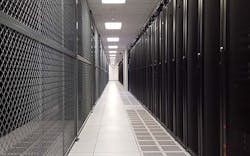More Acquisition Action Ahead for the Data Center Sector
Today we continue our Data Center Executive Roundtable, a quarterly feature showcasing the insights of thought leaders on the state of the data center industry, and where it is headed. In today’s discussion, our panel of experienced data center executives – Chris Crosby of Compass Datacenters, Chris Sharp of Digital Realty Trust, Mark Wachtmann of IO, Jeff Klaus of Intel DCM and Michael Custer of Chatsworth Products – will examine the outlook for mergers and acquisitions in the data center sector. The conversation is moderated by Rich Miller, the founder and editor of Data Center Frontier.
Data Center Frontier: There’s been lots of mergers and acquisitions in the data center industry. Is this likely to continue? If so, how might M&A activity impact the competitive landscape in the data center and cloud hosting industry in 2016 and beyond?
MARK WACHTMANN, IO
Mark Wachtmann: Mergers and acquisitions in the data center industry are expected to continue. The industry is moving towards expansive data centers that can take advantage of the efficiencies that accompany scale. The capabilities required to run a data center can’t be deployed cost effectively in small data centers.
In the long term, data center consolidation will be impacted by the amount of content that needs to be stored and transmitted. As content creators are increasing their output, the pressure on the network will increase. There is an opportunity here for larger data centers to deliver computing capabilities that allow them to push content closer to the end-user in order to ease the strain on the networks. I think as data center providers find opportunity in this area of innovation, the pressure on small data centers outside of the primary markets to join with bigger players will increase.
Chris Crosby, CEO, Compass Datacenters
Chris Crosby: Consolidation is a natural evolutionary process within any industry so I think the fact that we will see more is undeniable. What will be more interesting is the reason behind the acquisitions. For example, Equinix has just finished the Telecity acquisiton. Equinix offers customers direct connection to multiple cloud offerings, and that is helping to fuel their growth. For them, and others like them, the ability to continue to add capacity is going to be a key issue. You don’t have to look any further than Northern Virginia to see that companies like Microsoft, Facebook, Amazon, et. al. can’t build new facilities fast enough to keep up with demand, so, in some instances capacity will drive some of the M&A activity.
I think the other driver will be expertise. If I want to enhance my cloud capabilities or add them to my repertoire, what is the easiest and fastest way that I can achieve this goal? In some instances, it will be to buy someone who is already doing it. This can be more efficient than trying to build from scratch or searching for people with the experience that you’re looking for. This would be especially important for companies that want to compete, or at least carve out a niche, against the AWS and Azures of the world. These instances will be rarer in comparison to capacity driven acquisitions but as a company like Cisco has demonstrated, it’s sometimes easier to enter into a market, or increase you share of it, by buying your way in.
MIKE CUSTER, CPI
Michael Custer: Broadly, we might expect an M&A pause to see if valuations might reset to more attractive multiples. However, with actions by the Fed driving so much market behavior, consistent expectations are hard to come by.
From an IT supplier perspective, continuing data center service migration into the cloud means higher business risk and continues to up the stakes on winning the ever larger projects. If increasing scale is the primary aim of providers, we believe the colocation model remains a very attractive model for delivering a complete and competitive value decision chain to the end-user.
CHRIS SHARP, Digital Realty
Chris Sharp: M&A activity in the data center and cloud hosting industry is heating up. It absolutely will continue to do so. The main reason is the increasing demand and growth for public and private clouds that no single company can meet all the requirements. Not to mention, customers want to buy from a consistent vendor globally and once a relationship is established, they expect their products to naturally enter every market. That’s where it impacts the competitive landscape.
The competitive landscape in the data center and cloud hosting industry in 2016 and beyond will witness niche regional players start to sell some of their unviable data center assets and large data center providers like Digital Realty expand into new markets where customers are pushing.
JEFF KLAUS, Intel
Jeff Klaus: This is a function of building a lasting economic model, scale and companies’ recognition of possible synergies between other players. To that end, we will probably see continued M&A to consolidate positions or acquire key services. Along with M&A we’ll probably see increases in DCIM activity as organizations become larger, their solution portfolio becomes broader, and they need to streamline costs.
Regardless of the cost pressure, innovation and technology will continue to outpace efforts to commoditize services. Customer’s interest to support cloud, mobility, and software-defined everything will be the marching orders for the short term at least. At this moment there are still enough firms trying to differentiate on tools, services, and support to ensure the customer has many options.
NEXT: The State of the DCIM Market
Keep pace with the fact-moving world of data centers and cloud computing by following us on Twitter and Facebook, connecting with me on LinkedIn, and signing up for our weekly newspaper using the form below:








